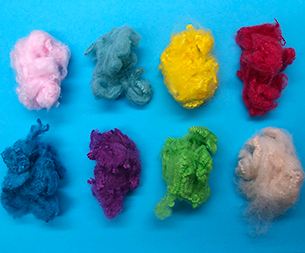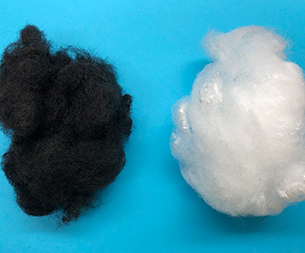Review the domestic pure cotton yarn price trend in August, the overall maintenance of narrow oscillation. While demand improved slightly month-on-month in August, the overall performance was still tepid. On the one hand, the opening rate of cotton yarn end and grey cloth end is maintained at low oscillation. Although recently by the high temperature weather brought by the power supply disturbance, but as the weather turns cool power supply situation will be improved, the afternoon market can pay attention to the "gold nine silver ten" peak season demand performance, the market is generally expected to demand probability is lower than normal, but the overall demand in September should be better than August. On the other hand, because the textile domestic demand is restricted by the epidemic, external demand is restricted by Xinjiang cotton ban, so the market does not hold too much hope for the subsequent peak season demand. Overall, cotton yarn short-term market mainly depends on peak season demand performance.
Reduce the new annual output of American cotton
The U.S. Department of Agriculture (USDA) August supply and demand report significantly reduced the U.S. cotton production in 2022/2023, resulting in a significantly tighter supply of U.S. cotton in the New Year. The output was reduced by 638,000 tons to 2.737 million tons, and the export was reduced by 435,000 tons to 2.613 million tons. According to the US cotton harvest area in August, the US cotton abandoned rate reached a new high and the ending inventory fell to a multi-year low, which is the main logic of the recent consecutive surge in US cotton.
However, the market in August supply and demand report of the United States cotton data adjustment there are more questions. Global cotton consumption is not as optimistic as estimated by the United States Department of Agriculture. China's cotton consumption data in 2021/2022 is at 8.056 million tons, which is significantly different from the actual order demand of enterprises, and the expectation of global cotton consumption in the New Year is not optimistic. At the same time, the market is also questioning the USDA for the New Year cotton cut is too pessimistic, does not rule out the possibility of subsequent production reverse adjustment.
The on-call numbers for December remain historically high, which is an important factor to watch going forward. At the same time, the global cotton consumption probability is weak, but also the market to the United States cotton rise partial cautious root cause. Vietnam and Bangladesh, where export orders have held up, also saw month-on-month declines. The market is not optimistic about cotton demand in the New Year due to the impact of the US dollar interest rate hike, the global economic outlook and geopolitics.
Supply is in excess
Since June, domestic cotton period shows the price to drop continuously. Although in the process of falling cotton yarn price downward, but the overall decline is not as big as cotton, resulting in immediate processing profits improved substantially. In the process of price decline, the spinning enterprise "deficit inventory" situation also makes the enterprise very uncomfortable.
At the heart of the domestic cotton market remains ample supply and persistently weak demand. As of August 25, Xinjiang cotton sales progress for 66.1%, a year-on-year decline of 33.7 percentage points, compared with the four-year average decline of 27.9 percentage points. At the end of July, domestic commercial cotton stocks stood at 3.194 million tons, a multi-year high. Whether in terms of sales progress or inventory, cotton supply is still in surplus until the new cotton is available. However, on the back of persistently weak demand, cotton yarn inventories of spinning companies have accumulated to multi-year highs.
Purchases of raw cotton by spinners remain mediocre, and stocks are at historically low levels. Cotton yarn and grey cloth inventory fell month-on-month, boot is still weak. Although the market has recently reflected a slight improvement in end demand, overall demand has changed little. In the downstream finished goods inventory on the high side and demand performance in general, the market's confidence is cautious, the cotton raw material procurement to maintain a cautious and with the use of the attitude to buy, the cotton price relative resistance. As the "gold nine silver ten" peak season gradually arrived, demand has not improved, the market mentality biased pessimistic.
Overall, in the near future, cotton yarn spot prices are basically stable, due to the high inventory of cotton yarn spinning enterprises, demand deviation, cotton yarn sales willingness is strong. The contract spread between cotton and cotton yarn increased significantly in September, mainly because cotton yarn had more water discount before, and the basis regression brought the spread between cotton and cotton yarn increased, thus driving the cotton and cotton yarn contract spread increased in January. However, due to the small amount of cotton yarn holding, it was difficult to participate. In addition, according to the fundamental analysis, short-term cotton yarn prices continue to oscillate pattern, the key to the subsequent market is still the peak season demand performance and the new cotton market.
- Jiangsu Haibang New Material Co.
- China's textile industry is at a
- Key Guide to Selecting Polypropy
- The impact of the Federal Reserv
- The core performance advantages
- China Textile Machinery: Driven
- The core applications of polypro
- Textile foreign trade has shifte
- How to choose the right polyprop
- Cross-border textile merchants a
- Markets
- Automotive Products
- Nonwoven Lining
- Geosynthetics
- Liquid Filtration
- Apparel and Textiles
- Hygiene Products
- Building and Construction
- Other Markets
- Contact Us
- Contact Haibang





